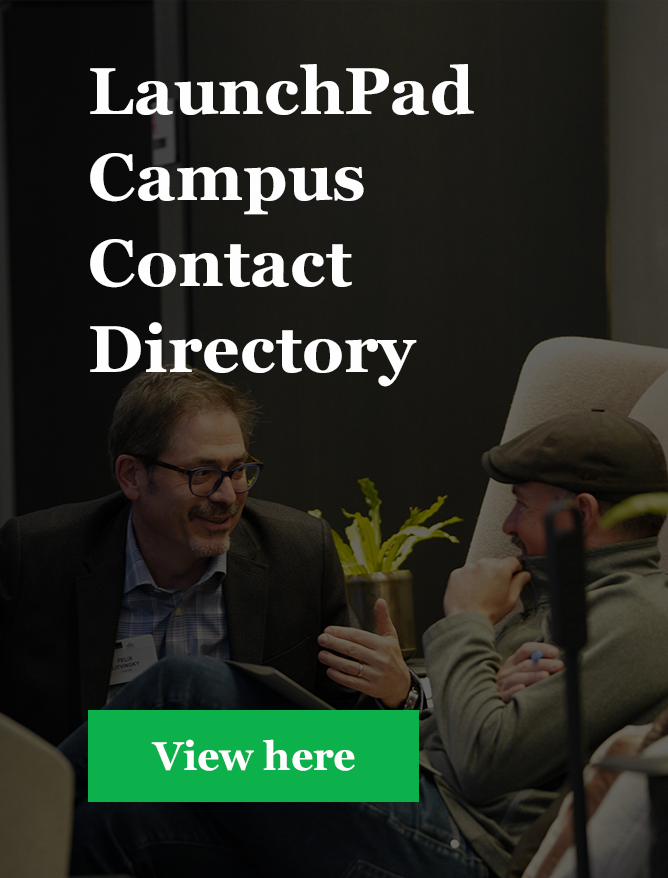Techstars Entrepreneur's Toolkit: Master Your Pitch
While the challenge for your students with the elevator pitch was capturing their audience’s interest in an extremely short amount of time, mastering a full pitch presentation (which can be anywhere from 2 to 10 minutes long) is keeping their audience’s attention!
Happily, with more than 50 Accelerators around the world - each hosting a Demo Day at the conclusion of the program - Techstars has learned a thing or two about effective pitches.  The key sections described in more detail below include: Introduction, Demo, ‘Biz Stuff’, and Landing. To help visualize what percent of pitch time should be spent on what area, check out our demo day pitch model! (The times recommended below are for a 2-3 minute pitch, as will be the case at Propel.)
The key sections described in more detail below include: Introduction, Demo, ‘Biz Stuff’, and Landing. To help visualize what percent of pitch time should be spent on what area, check out our demo day pitch model! (The times recommended below are for a 2-3 minute pitch, as will be the case at Propel.)
- The Introduction (30 seconds): Know your audience and get their attention.
In this section, students should (A) identify themselves and their company, (B) establish their credibility (providing a “reason to believe”), and (C) explain their customers’ problem.
Remember, since your students will likely be competing among many other teams and with a host of distractions (including everyone’s cell phone!) the introduction must be interesting and attention-grabbing. Students can try to make them laugh, surprise them, plant a fear, or make them think. The customers’ problem (market opportunity) must also be easily understandable. Consider a metaphor if the issue is technical or complex, or a real-life example the audience might have experienced to communicate the issue.
- The Demo (1-1:30 seconds): Show, don’t tell.
Rather than describing all the different features of their business and getting into the details about customer acquisition, sales model, etc., in the demo section, students should show how their product or service is going to work.
No Slides? No Problem!
Sometimes your students won’t have the benefit of slides to pitch their idea. That’s ok, since audiences can generally only read or listen - not both at the same time. In these situations, students should consider:
• Bringing a prototype (if you have a physical product). • Bring a sign or poster to illustrate the service or solution. • Tell a story to help the audience understand your product (an emotional connection will stay with the audience longer than numbers will). • Don’t be afraid to repeat your core message: open and close with the big idea. • Make your message as simple and clear as you can. • Practice! In front of family, friends, the mirror. There is no substitute for practice. - The Biz Stuff (30 seconds): Show me the money!
This section of a student’s pitch focuses on risk - and reward. Information we normally recommend be included in this section includes: Market Size, Business Model, Differentiation, Team, Timeline, and Traction.
That’s a lot to communicate - in a short amount of time. We recommend students leave out the obvious and include the most important and impressive elements applicable to their business: If they’ve made 30 sales during the first semester of school - describe that traction. If the CTO has been awarded a MacAuthur ‘Genius Grant’ - mention that. If the market size is every Starbucks purchase - share a fact like the average American spends $21 per month on coffee.
Being humorous and clever can pay off here too. Be sure to share the story of Next Big Sound described in this module. These Techstars Boulder 2009 student entrepreneurs knew their audience and targeted potential investors (before selling to Pandora in 2015!)
- The Landing (15-30 seconds): A lasting impression.
A successful landing means that the idea that your students are communicating will stick in the audience’s brain long after the pitch is over. Key elements to this component include repeating or emphasizing the key points, making the call to action, and concluding with confidence.
The adage ‘practice makes perfect’ can not be overemphasized. Students should rehearse their pitch extensively, experimenting with different paces, volumes, energy-levels, and physical movement at different parts. A few other key recommendations:
• Consider the power of silence - a long pause often actually attracts attention. • Lose the bullets and complex graphs - complex visuals and excessive bullets confuse rather than clarify. • NEVER lie - if a student has unaccomplished plans for their venture, encourage them to share those, along with “where we are now” comments.
Recommended Student-Director Meetings:
- Prior to working with students on their pitches, encourage them to review the Master Your Pitch module, watch the videos, and complete the corresponding worksheet up to “Practice What You Play” section. At this point a student or student team is more prepared for an initial meeting to get your one-on-one feedback and instruction.
- You may choose to host a live pitch practice event at your LaunchPad as your second meeting. Pitching participants, other students, and other faculty or staff can be your test audience and can use the “Pitch Practice Scorecard” to evaluate and record their impressions.






